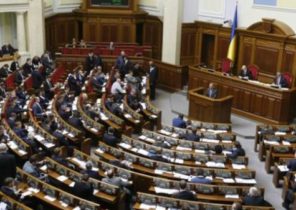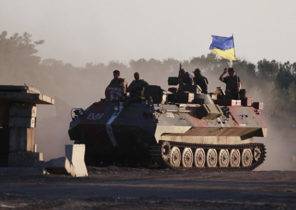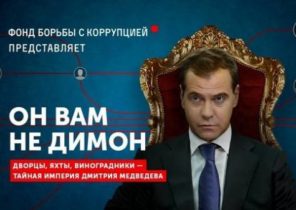
In the case of a rapid offensive on the Baltic States, NATO will remain few attractive options, among which risky counter-attack, the threat of use of nuclear weapons or just a humble reconciliation with the annexation of these countries by Russia.
One of the mentioned in the report options will require a huge amount of time to mobilize and deploy large groups of troops to conduct counter-offensive, which will most likely lead to a protracted and bloody battles. Another option is to threaten nuclear weapons, although such a scenario seems unlikely, and sometimes even unrealistic in the light of American strategy for the reduction of the nuclear Arsenal and the unwillingness to use nuclear weapons.
The third and last variant mentioned in the study, is to simply give the Baltic States to the enemy and move NATO in a state of intense cold war. Naturally, many residents of these countries will be opposed to this idea, and in these circumstances, NATO will significantly diminish or even partially disintegrate.
How serious a threat to NATO and the United States is being created in Russia, the fighter invisible fifth generation, its nuclear Arsenal, modern air defenses, anti-satellite weapons, ground forces and submarines?
Tensions between NATO and Russia forced many to closely examine this issue and also the current state of weapons and the level of technical equipment of the Russian army in order to better understand the scale of the threat that they represent.
Naturally, the Russian military maneuvers and annexation of the Crimean Peninsula has led many analysts from the Pentagon think about the tempo in Russia, modernization of the armed forces, and the troops, weapons and military equipment of this formidable giant of the cold war.
Russia clearly believes and makes it clear that to create a counterweight to the North Atlantic Alliance and to keep it. But the authors of some studies of the current state of the Russian army doubt her ability to throw a real challenge to NATO in a protracted all-out war.
However, Russia achieves new successes in military terms, the Pentagon and many experts and analysts have expressed concern about the placement of NATO forces in Eastern Europe. They doubt that their will be enough to keep Russia from invading the region.
In addition, Russia’s economic problems did not affect her resolve to pursue its military modernization and to increase the military budget, although today the army of this country is only a small fraction of what had the Soviet Union at the height of the cold war in the 1980-ies.
This former giant has become much less territory and external borders than in the 1980-ies, but Russia is trying to rapidly increase its ground forces, air force and Navy, converting them into the information age of high technology and persistently creating military equipment of new generation.
Conventional and nuclear Arsenal of Russia decreased significantly compared to the period of the cold war. However, the country continues to build submarines with airindependent engines, fighter-invisible T-50, a new generation of missiles and the most modern weapons and equipment for soldiers of the army.
Edition of the National Interest has recently published a series of posts about the technological achievements of Russian constructors of military equipment. They reported on a new Russian anti-satellite weapons, on tanks T-14 “Armata”, on defenses, on preliminary plans to create a hypersonic fighter of the sixth generation, and much more. The materials of The National Interest and other publications indicates that Russia pays serious attention to the modernization of the army and are making significant progress in this matter.
So, according to The National Interest, Russia conducted a successful test missile launch satellite intercept with direct orbit insertion “Nudol”.
“This is the second test of a new weapon capable of destroying satellites in space. This missile could be launched from the cosmodrome in Plesetsk, Northern Russia”, — stated in the message of The National Interest.
In addition, the analyst of this edition Dave Majumdar (Dave Majumdar) reported that the Russian airborne troops are planning to form six tank companies, equipped with a modified T-72Б3М. In the next two years, these companies will be reported to battalion staff.
Russia is also developing a combat vehicle tank support “Terminator-3”.
During the cold war, the Russian military budget accounted for nearly half of the total expenditures of the country.
Today military spending is a smaller portion of the national budget. But in spite of large differences from the 1980-ies, the Russian military budget again begins to increase. From 2006 to 2009 it increased from 25 to 50 billion dollars, as reported by Business Insider. And the defence budget of 2013 amounted to 90 billion.
In General, the Russian armed forces during the cold war its size was about five times more than today.
In 2013, in active military service in the Russian armed forces consisted of 766 thousand troops, while the reserve number was 2.4 million people, according to globalfirepower.com. During the cold war the Russian army had three to four million people.
According to the same estimates for 2013, the Russian armed forces were more than three thousand aircraft and 973 helicopters. Russia has 15 thousand tanks, 27 thousand armored combat vehicles and nearly six thousand self-propelled artillery. The strength of the Russian army was significantly reduced in comparison with the times of the cold war, but Moscow has made efforts for modernization and preservation of military equipment and platforms. For example, created in the 1970-ies of the T-72 tank many times subjected to modernization.
As for the Navy, estimated Globalfirepower.com Russia 352 of the ship, including one aircraft carrier, 13 destroyers and 63 submarines. The black sea is Russia’s important strategic area from the perspective of Economics and geopolitics, as it gives her a way out in the Mediterranean.
Analysts also noted that in 80-e years the Russian armed forces has received a huge amount of conventional and nuclear weapons, starting with unguided missiles, cruise missiles, and ending with the effective means of defense.
Experts note that the anti-aircraft missile systems s-300 and s-400 are particularly effective when properly upgrade and maintain.
Referring to reports in Russian media, The National Interest reports that the Russians are currently experiencing a new air defense system s-500, capable of hitting targets at altitudes of up to 200 kilometers.
Part of the Russian VVS has su-27 built in 1980-ies, which are placed in all strategically important regions of Russia.
Su-27, which is often compared with the American F-15 Eagle is a twin-engine highly maneuverable fighter, designed primarily to gain air superiority.
Rand war games
Many experts argue that NATO due to its size, firepower, air superiority and modern technology will ultimately prevail over Russia in a massive war. But this in no way negates the findings of a study conducted last year by the analytical center Rand, which explains that in the case of the Russian invasion in Baltic countries to NATO will be in an extremely difficult position.
The current structure of NATO forces in Eastern Europe allows the Alliance to resist Russian invasion of Latvia, Lithuania and Estonia, said their findings Rand.
Through a series of comprehensive war games, in which the “Reds” (Russian) and blue (NATO) troops were in the Baltic States in various military scenarios, the Rand Corporation in its study paper titled “Enhancing deterrence on NATO’s Eastern flank” concluded that for a successful defense of this region, the Alliance will require a much larger group of aviation and ground forces.
In particular, the authors of the study urge NATO to adopt a strategy similar to the concept of air-land operation of the 1980-ies. At that time in Europe was placed several hundred thousand troops of the US army in the framework of the strategy of deterrence potential of the Russian invasion. The command of the American troops in Europe told Scout Warrior that is now on the continent is 30 thousand troops of the U.S. army.
The Rand study argued that if Eastern Europe will not defend the group consisting of at least seven brigades with fire and air support, Russia will be able to capture the Baltic countries in just 60 hours.
“In its present form, NATO is not able to successfully defend the territory of its least protected members. Numerous war games involving military and other experts showed that the Russian troops reached the outskirts of Tallinn and Riga for 60 hours. Due to such a rapid defeat of NATO will be very little options,” reads the study.
The concept of air-land operation was the basis of the strategy of the US and its allies during the cold war. Among other things, it included the exact interaction between the maneuverable mechanized ground forces and aircraft in the sky. In the framework of this concept aircraft for its air strikes was to weaken the enemy on the front lines to destroy supply facilities in the rear. Then a large formation of ground troops in cooperation with aviation should have been easy to break through fortified defenses and start moving in depth.
In the case of a rapid offensive on the Baltic States, NATO will remain few attractive options, among which risky counter-attack, the threat of use of nuclear weapons or just a humble reconciliation with the annexation of these countries by Russia.
One of the mentioned in the report options will require a huge amount of time to mobilize and deploy large groups of troops to conduct counter-offensive, which will most likely lead to a protracted and bloody battles. Another option is to threaten nuclear weapons, although such a scenario seems unlikely, and sometimes even unrealistic in the light of American strategy for the reduction of the nuclear Arsenal and the unwillingness to use nuclear weapons.
The third and last variant mentioned in the study, is to simply give the Baltic States to the enemy and move NATO in a state of intense cold war. Naturally, many residents of these countries will be opposed to this idea, and in these circumstances, NATO will significantly diminish or even partially disintegrate.
The study describes in detail what needs to be done to ensure a credible and effective deterrence.
“The game showed that groups consisting of seven teams, including three heavy tank brigade with the means of air and ground fire support, which is ready to fight with the beginning of hostilities, will be enough to prevent a quick capture of the Baltic States,” the study authors write.
Acting under the different scenarios of the war game, the participants came to the conclusion that in the absence of a larger defensive groups within the mechanized units of the enemy will be able to quickly overcome the resistance of NATO.
“Lack of air defense short range in the American units, as well as a minimum such funds in the armed forces of other NATO countries means to counter the enemy offensive in many cases will only combat patrol aircraft of the Alliance, which is very little. As a result, some battalions of “blue” (NATO) suffer heavy losses and the offensive will be broken”, — noted in the study.
Latvia, Lithuania and Estonia are the most likely targets of a Russian invasion, as they are all close to Russia and spent many years in the Soviet Union, say the authors.
“As in Ukraine, Estonia and Latvia, many Russian lives, which are unevenly integrated into the political and social system that gives Russia the excuse to intervene in the Affairs of these countries,” they write.
The Rand study argues that in spite of the large costs placement of new teams is a necessity for NATO.
The creation of three new armored brigade combat groups cheap cost of the American army. The initial costs for the purchase of all necessary equipment and equipment for teams, as well as the cost of artillery, air defense and other means of support will be about $ 13 billion. However, a considerable part of this equipment, especially expensive tanks “Abrams” and infantry fighting vehicles “Bradley”, is already available, according to the study.
The question about the number of NATO troops in Eastern Europe is currently being studied, and under the new administration there may be some changes. But NATO and the United States for quite some time thinking about increasing the number of troops on its Eastern flank in order to more reliable containment of Russia.
Adopted last year, the Pentagon’s initiative on European security provides for the allocation of additional funds and direction to Europe on a rotational basis. However, it is unclear what will be the building of these forces in the end.
At the same time, this initiative will cost $ 3.4 billion provides for an increase in troops in Europe, the establishment of advance depots with reserves of combat equipment and staff support to the NATO forces.
The command of the American troops in Europe told Scout Warrior that Europe will be the new doctrine of solidarity, and that the number of troops will also be increased.
So, NATO, from may 27 to June 26 of last year spent in Poland and Germany exercises Swift Response 16, which attracted more than five thousand troops from countries such as United States, Belgium, France, Germany, UK, Italy, Netherlands, Poland, Portugal and Spain.







